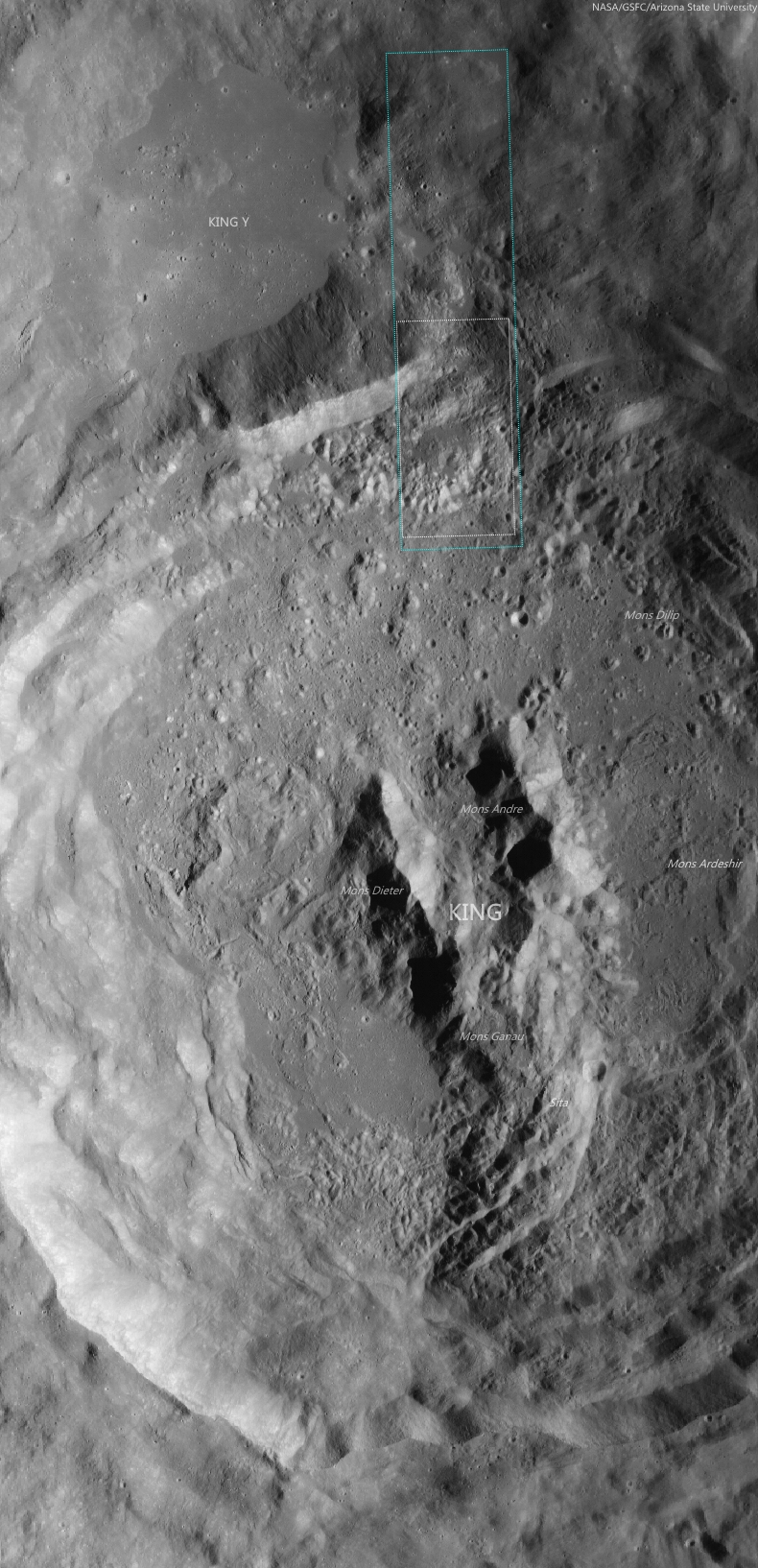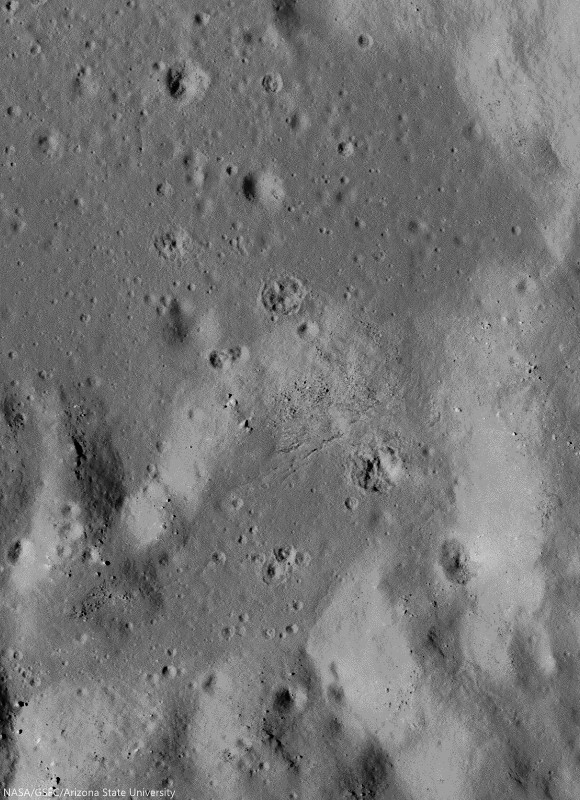 |
| Impact melt ponds adorn the lumpy terraces of King crater. If you look carefully, you can see small fractures in some of the these ponds. 10.9 km field of view from LROC NAC mosaic M1159315479LR, LROC orbit 22783, July 6, 2014; 53.77° incidence angle, resolution 1.16 meters from 114.15 km over 6.41°N, 120.37°E [NASA/GSFC/Arizona State University]. |
In the image above, impact melt pooled among the terraces in the walls of King crater, a complex Copernican crater on the lunar farside.
Impact melt is generated when kinetic energy associated with an impact is transferred to the target rock. Shock waves cause the rock to melt nearly instantaneously. The impact melt is flung all over the interior of the crater and some even makes it out of the crater.
Melt splashed on the crater walls tends to drain back down pooling on ledges. This downward flow resulted in a coating of impact melt called a veneer, visible in this region, along with other features like fractures.
Fractures in impact melt rocks can be the result of tectonic stresses and cooling and contracting of the impact melt. Sometimes craters also form before the impact melt has fully solidified, resulting in oddly shaped craters that resemble craters that form when pebbles are thrown into mud.
Impact melt is generated when kinetic energy associated with an impact is transferred to the target rock. Shock waves cause the rock to melt nearly instantaneously. The impact melt is flung all over the interior of the crater and some even makes it out of the crater.
Melt splashed on the crater walls tends to drain back down pooling on ledges. This downward flow resulted in a coating of impact melt called a veneer, visible in this region, along with other features like fractures.
Fractures in impact melt rocks can be the result of tectonic stresses and cooling and contracting of the impact melt. Sometimes craters also form before the impact melt has fully solidified, resulting in oddly shaped craters that resemble craters that form when pebbles are thrown into mud.
Aside from its rather peculiar central peak, King is rather unique in that the impact melt is not evenly distributed around crater, but rather accumulated in the north-northwest region outside the crater rim. This may be the result of an oblique impact. In the case of an oblique impact, impact melt is concentrated downrange of the incoming projectile.
 |
| Contextual view of farside Copernican Age crater King (76.2 km; 4.96°N, 120.49°E), with footprint of LROC NAC mosaic M1159315479LR (orbit 22783, July 6, 2014) and LROC Featured Image field of view. 50 km-plus field of view from LROC Wide Angle Camera (WAC) monochrome (643 nm) observation M176845114CE, LRO orbit 11197, November 25, 2011; 61.87° incidence angle, resolution 57.8 meters from 42.52 km [NASA/GSFC/Arizona State University]. |
Related Posts:



No comments:
Post a Comment